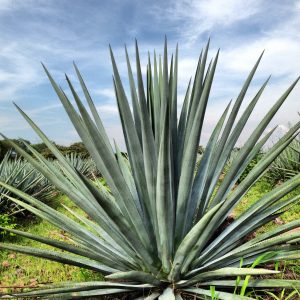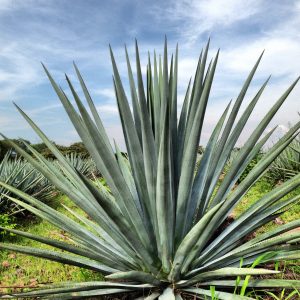 History of Tequila & Mezcal
History of Tequila & Mezcal
The origin of fermenting agave began somewhere between 1000 B.C. and 200 A.D., where pulque, a drink made from fermented sap of the agave plant, was first documented on a stone carving from 200A.D. A prized drink among the Aztecs communities, it is thought that pulque may have existed as far back as 1000 B.C., initially developed by Olmec civilization in the lowlands of Mexico.
There are many competing narratives regarding tequila’s origins, though one dominant narrative describes the Spanish building primitive mud stills to make agave wine, in response to dwindling brandy supplies during the Spanish conquest of Aztec empire. Later, in 1565, the Spanish government opened a trade route between Manila and Acapulco, and Filipinos migrating to Mexico shared their process for converting coconut sap into an alcoholic beverage called tuba. The method for distilling liquor was applied to the agave plant, and within years, mezcal production boomed in the prime agave growing region in the Jalisco mountains.
By the early 1600s, the Marquis of Altamira built the first large-scale distillery in a town now known as Tequila, Jalisco. In 1758, the Cuervo family began commercially distilling tequila, followed by the Sauza family in 1873. In a move to take ownership of its agave-based drinks, the Mexican government officially declared tequila the intellectual property of Mexico in 1974. According to the declaration, tequila could only be produced and aged in five authorized states in Mexico, making it illegal for all other regions or countries to produce or sell “tequila.”
“All tequila is mezcal, but not all mezcal is tequila”
Both tequila and mezcal are traditional Mexican spirits made from the agave plant. Tequila is a type, or subset of mezcal, where mezcal is defined as any agave-based spirit. Where Mezcal can be made from a wide variety of agave from several different regions, tequila must only be made from blue agave.
Making Tequila
To achieve the high sugar levels that agave syrup requires, the agave plants need to grow untouched for six to eight years. When the blue agave plant is ripe, the harvester, or “jimador” removes the agave leaves from the heart, called “piña” for its semblance to a pineapple. The piña, which weighs about 100 lbs at harvest, is then steamed inside an industrial oven, converting the complex carbs into simple fermentable sugars. Once cooked, the piña is crushed to release its liquid, which is then fermented and distilled two to three times to create tequila.
Making Mezcal
Roughly translated from Nahuatl to mean “baked agave,” mezcal can be made from a variety of different agave plants, harvested just as blue agave for tequila. Unlike tequila, mezcal piñas are cooked in large outdoor fire pits, imparting the piña with its signature smoky character. Once roasted, the agave heart is crushed in a mill before being placed in wooden barrels to ferment with water. After the fermentation, the agave mash is blended two to three times to create a smooth liquid.
Age & Flavour
Blanco tequila, aged up to two months, will express earthy, peppery and citrus flavours. Reposado tequila, aged between 2 months and 1 year, tends to show subtle flavours of oak, caramel and vanilla. Anejo Tequila is aged at least one year, is darker in colour and expresses a smooth balance between agave and oak flavours.
Like tequila, mezcal’s flavour will vary depending on where the agave was grown as well as the age of the spirit. Mezcal can taste a little charred because of how it’s produced, but it can also have floral, fruity, or earthy notes.
Stricter rules governing the tequila making process has led to more consistent flavours, lending itself more easily to industrial production than mezcal. By nature, mezcal is a bit more unpredictable in its expression, but results are often wonderfully unique.
(Leah is a Toronto based freelance writer as well as the Beer Boss and a server at C’est What)


